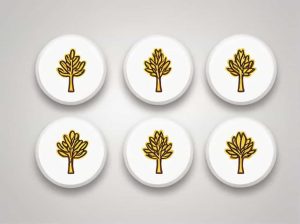The word bole refers to the trunk of a tree particularly the main stem that extends from the roots and supports the branches and leaves. The term is often used in forestry botany and woodworking to describe the part of the tree that is most valuable for timber.
Apart from its botanical meaning “bole” can also refer to a reddish-brown clay used as a pigment in art and construction. This alternative meaning is less common but still relevant in specific fields.
The Importance of the Bole in Trees
The bole plays a crucial role in a tree’s growth and survival. It serves multiple functions including:
- Structural Support – The bole holds up the branches and leaves allowing the tree to grow tall and access sunlight.
- Transport of Nutrients – It contains the xylem and phloem which transport water minerals and nutrients throughout the tree.
- Storage of Energy – The bole stores starches and other essential compounds that help the tree survive during unfavorable conditions.
Characteristics of a Tree Bole
The size shape and texture of a tree’s bole can vary depending on the species and environmental conditions. Key characteristics include:
- Thickness – Some trees have thick sturdy boles (e.g. oak trees) while others have slender trunks (e.g. birch trees).
- Bark Texture – The outer layer of the bole can be rough smooth scaly or peeling depending on the tree species.
- Straightness – In commercial forestry a straight and tall bole is preferred because it produces more usable lumber.
The Bole in Forestry and Woodworking
1. Timber Production
The bole is the most valuable part of a tree for timber production. Wood from the bole is used for making:
- Furniture – High-quality wood like mahogany and teak is used for making durable furniture.
- Construction Materials – Strong timbers from the bole are used for building houses bridges and boats.
- Paper and Pulp – Some tree species such as pine provide wood that is processed into paper products.
2. Tree Measurement and Logging
Foresters measure the bole to determine the commercial value of a tree. Common methods include:
- Diameter at Breast Height (DBH) – A standard measurement taken at about 1.3 meters (4.5 feet) above the ground.
- Total Height – Measuring the entire length of the bole to estimate the amount of usable wood.
The Role of the Bole in Ecology
Beyond its economic value the bole is essential in maintaining ecological balance.
- Habitat for Wildlife – Many animals including birds insects and fungi depend on the tree’s trunk for shelter and food.
- Carbon Storage – Trees absorb carbon dioxide and store carbon in their boles helping to reduce the effects of climate change.
- Soil Stabilization – The bole provides stability to the tree preventing soil erosion in forests and landscapes.
The Alternative Meaning of Bole: A Clay Pigment
In art and construction bole also refers to a reddish-brown clay. It has been historically used for:
- Gilding – Artists apply bole as a base layer before covering objects with gold leaf.
- Painting – It serves as a natural pigment in traditional artwork.
- Pottery – Some ceramics use bole clay to achieve unique textures and colors.
Common Confusions and Misconceptions
Since “bole” is not a commonly used word it is sometimes confused with similar terms:
- Bowl – A container used for eating or serving food.
- Boll – The rounded seed capsule of plants like cotton.
- Bolete – A type of mushroom.
Understanding the correct meaning of bole is essential especially in discussions related to forestry botany and art.
The bole is a vital part of a tree serving both structural and functional purposes. It is crucial in timber production ecology and environmental conservation. Additionally the word can refer to a special type of clay used in art.
Whether you are a nature enthusiast a woodworker or an artist understanding the meaning and significance of bole can help deepen your appreciation for trees and their many uses.



